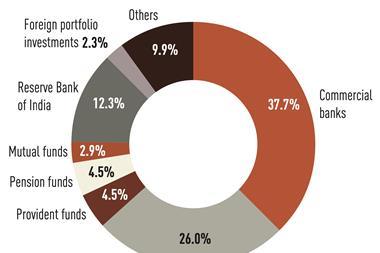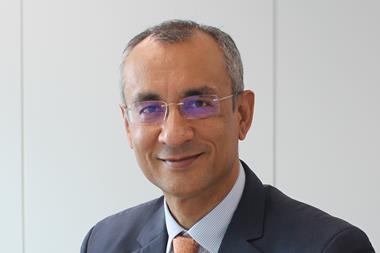The investment landscape has been transformed since the Asian financial crisis of 1997. Then South Korea came close to running out of foreign currency, and had to turn to the International Monetary Fund and the World Bank for a rescue package of nearly $60bn.
That of course came with conditions; many of the required reforms were painful. But they helped South Korea face up to a lot of challenges that other Asian countries, particularly Japan, have yet to tackle. Foreign reserves have been replenished, and the country’s sovereign wealth fund, the Korean Investment Corp. (KIC) and the National Pension System (NPS) have plenty of money to invest at home and abroad. The new breed of South Korean investor is up and running.
A new wave
Setting the new direction for the new wave of South Korea’s public funds is the NPS with its AUM worth 363trn won ($322bn) of which 14% is invested overseas and is expected to climb to 20% by 2016. Jun Kwang-Woo, the chairman of NPS, the 4th largest pension fund in the world, tells IPA: “We are going through the investment paradigm shift moving away from domestic bond centric culture toward more diversified portfolio to include expanded exposure in the domestic equity as well as in the overseas and alternatives investments.”
“NPS is one of the most sought after institutional investors in the world,” says Jeon Yong-Bae, who’s been chief executive of Franklin Templeton’s Korean office since 2010 - the first Korean to hold the post. “So many foreign asset management houses line up to meet with the chairman of NPS.”
Sheer size alone is not the change agent. The new leadership at the NPS took the bold initiative in convincing the nation that it is time to invest overseas, an open invitation to foreign asset management houses. “Doing business with local institutional investors is very difficult in Korea. So, getting a mandate from major organisations like NPS is equivalent to getting a nod of approval also for smaller institutional investors.”
And that’s important. Asset managers that are wholly foreign owned are still rare in South Korea. There are just seventeen.
Market players
Franklin Templeton entered the market first through a joint venture in 1997 with Ssangyong Group’s securities arm, just before the financial crisis broke. FT bought out its partner in 2000, to become, it says, the first asset management firm in the country to be 100% owned by non-Koreans. FT’s market share is around 1.6% of the $500bn of assets under management in South Korea, as of March. That’s split 70/30 between institutions and retail investors.
The market is still dominated by the top 10 local asset managers such as Samsung and Mirae. Together they account for around four-fifths of AUM. The remaining fifth is shared by about 80 smaller local firms and foreign outfits in Korea.
“Korea is a tough market to enter, but if you have the patience enough to stick it out and have strong adaptability in localisation to go beyond brand reputation and home bias to develop customised local product, it is a very attractive market worth waiting for it to take root,” Jeon says. “And, we have 15 years of track record to prove that.”
The potential then for foreign entrants is big - Korean nationalism is still strong, but it is waning. More and more investors are prepared to trust their money to big international players. And foreign managers often have a competitive advantage: they have much more experience and information in diversification across many different asset classes and many different countries.
Jeon says most pension funds in South Korea have allocated less than 10% of their money abroad - compared to about 30% in many other countries.
Other pension funds
Second-tier pension funds, such as those for the military and teachers, plan some aggressive expansion of their international portfolios. The Korea Teacher’s Pension Fund (KTPF) wants foreign investment, now at around 5.5% of 12trn won asset, to reach 8.6% by the year’ end, and double by 2015.
“We began our overseas investment in 2005 with an extremely small amount,” says Lee Yun-Kyu, the professional investor turned CIO of KTPF. “But, we put a brake as the 2008 global financial crisis erupted. Now, things are changing as the global economy is getting into a better shape.
“The local market is getting too small for us as we will continue to grow for now. Also, in terms of asset allocation, expanding investment in offshore account, including in the alternatives, is our way of diversifying our portfolio and hedging risk while improving our return. This clearly is a trend for South Korean pension funds to go abroad.”
More conservative Korea Teacher’s Credit Union (KTCU) is still cautious, but that did not stop them from plunging into the new investment wave. Since launching overseas investment by allocating 4% last year, KTCU added more from their 21trn won asset to reach 6.8% by last April and targets at 10% in 2015. “In fact, the key element to the 2012 investment strategy lies in portfolio diversification, focused on reducing dependency on domestic bond investment, while expanding exposure in local equity as well as alternative and other overseas assets,” says KTCU’s Chairman Kim Jung-Gi, a former education bureaucrat.
Changing demographics
Like many countries, South Korea’s demographics are unfavourable. According to Statistics Korea, the workforce is ageing fast. The proportion of employees over fifty has doubled since 1991 to account for one-third of the workforce in 2012. Add in a birth rate well below replacement levels, culture that generally disapproves of immigration, and a lopsided pension plan scheme that offers greater benefit than the principal contribution and you can see the problems ahead.
“The OECD predicted the National Pension Fund of Korea will be depleted by 2060,” says Didier Giesen, sales director for hedge funds Asia Pacific at Misys Sophis. He’s been covering the Korean market for nine months now. Misys Sophis provide portfolio management for buy and sell sides. It manages 12 hedge funds since launching operations last January. Five of the funds are small. They are not really new, but are offshoots of funds operated by larger local managers from Mirae and Woori.
The days of conservative investing - by buying South Korean government and corporate bonds - are over. Yields have collapsed: 3 to 4% is now typical, says Franklin Templeton’s Jeon, while liabilities are growing at 7 to 8% a year.
Alternatives
Giesen’s solution is perhaps predictable, given his employer: “To compensate for this deficit, pension funds will need to have a better ratio of replacement and increase their capital income by other means. Hedge funds have performed better than equity indices and fixed income yield in the last decade, even with the 2009 credit crisis. Alternative investment represents the best bet on controlling risk and increasing return.”
Seoul regulators allowed hedge funds to start operations domestically last year. Not all funds are ready to jump into such alternatives. “I am not looking into the hedge funds yet because of the risks involved and high fees, although we would have to in the future,” says KTPF’s Lee.
However the Military Mutual Aid Association’s (MMAA) CIO, Park Seok-Hwan, is an enthusiast already. “We had to change our strategy because we reacted rather timidly to the 2008 global financial crisis triggered by sub-prime mortgage problems. Our interest and appetite for M&A and real-estate investment as well as the alternative investments are still strong.”
Nearly a third of the MMAA’s 9% out of 8.4trn won asset is allocated to foreign assets and managed directly abroad. “Our strength lies in alternative investment and real-estate business, so our primary area of interest will be in the overseas alternative market and equity investment,” Park says, citing his extensive networking built over 7 years in Hong Kong as an international investor. “Currently, we are looking into about two business opportunities. Building know-how and experiences by practicing small scale investment to start will be important. We will not be rushing into any large-scale speculative investment.
“Actually, we have been investing in the overseas market for some time but they are concentrated in the alternative investment such as infrastructure. Our offshore account in the equity market is negligible and it is in this sector that we want to see expansion in the future,” he adds.
“The fundamental merit in the overseas expansion is in hedging risk while improving return. And, that is why it is a new opportunity worth developing. Obviously, such new venture requires expertise and it is the expert advice we want our foreign business partners to offer us.”
Pension funds are not the only big investment players in South Korea. Korea Post offers banking and insurance. The Ministry of Knowledge Economy supervises operations, although in practical terms Korea Post, the second largest in asset size after NPS with its 90trn won asset, runs itself as a private business. Currently, Korea Post’s overseas exposure stands at mere 2%-3% but it is also planning on expansion.
South Korea’s Public Officials Benefit Association in May purchased an office building in London, the second public fund to own property in the UK after the NPS, which fund the take-over of HSBC’s headquarters in London in 2009.
The Association, which serves provincial civil servants, has a fifth of its AUM totaling 5trn won invested in real-estates, including office buildings at home and now, abroad. Chairman Koo Ki-Chan told local media that “by investing in the overseas property, we aim at diversifying portfolio and offset our relatively higher exposure in the domestic stocks and as well as securing stable income source.”
Sovereign wealth fund
And then of course there is the country’s only sovereign wealth fund, KIC. Unlike pension funds, KIC’s assets are entirely invested abroad by mandate. Lee Doo Won, an economist at Yonsei University, says: “KIC is provided with about 10% of the total usable foreign reserves from the nation’s central bank and Ministry of Strategy and Finance and so management of KIC’s investments tended to be extremely cautious and conservative given the history of South Korea nearly having to declare a moratorium on its debts in the 1997 Asian financial crisis.”
“The return on investment, obviously, suffered as result and the public began to criticise its poor performance recently prompting KIC to improve their return. But, their responsibility to maintain the national foreign exchange reserve fundamentally limits in how far they can take risk, which differentiate them from many other sovereign wealth funds.”
Sovereign wealth funds, of course, have a very different investment outlook to retirement institutions. Hank Morris, an advisor at Triple A Partners in Hong Kong, an institutional asset advisory firm, says: “Their mandate is open-ended. It is just intended to enhance the national wealth over a long period without any particular tenure attached to the investment like retirement funds, which are bounded to clearly defined future liabilities. They can select investment from multiple sectors that have different yields over a different time frame. That gives KIC lot of flexibility.”
But both entities are exposed to political machinations and subject to the public scrutiny. South Korea’s parliament holds NPS and KIC accountable. The Bank of Korea - the country’s central bank - and the Ministry of Strategy and Finance provide investment guidelines to KIC while the Ministry of Health, Welfare and Family Affairs exercises nominal supervision over NPS, allowing NPS with a greater autonomy in formulating its portfolio.
Since launching 7 years ago with $20bn, KIC’s total AUM now stands at $38.5bn, spread out into foreign equity and bond at a 40% and 50% ratio respectively, leaving 10% allocated to alternatives. With the possibility to add $5bn within this year, KIC is looking to enhance their alternative assets, including from the energy sector. Morris says: “In actual amount they both have similar AUM invested in the overseas market but one key differentiating factor is that even though the KIC investment mandate is much broader, it has to be ready to provide liquidity at command.”
And with the ever-present possibility of a rapid collapse of neighbouring North Korea, that is a very important consideration.












No comments yet